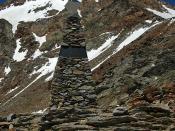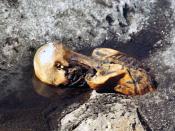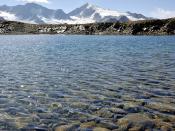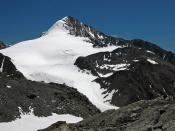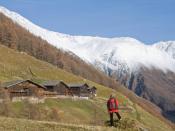The Alpine Iceman The "Iceman"ÃÂ as he was immediately named, or Homotyrolensis, as scientists call him, was found by chance in September 1991 by a German couple hiking on Mount Similaun (in the Otztaler Alps), on the Austria-Italy border. The particularly hot summer that year had melted most of the snow, bringing to light remains that would otherwise have lain hidden-for who knows how long? After investigators resolved some initial uncertainty about the find, the body was crudely hacked out of the ice, suffering damage in the course of the extraction. It soon became clear, however, that it was not an ordinary corpse. Near the body lay several objects that were very different from those normally used by modern hikers who venture to such altitudes.
Some realized that the corpse was very old. After the first tests, Konrad Spindler, of Innsbruck University, Austria, made a surprising statement-that the mummified body found on Mount Similaun was some thousands of years old! Further analysis and research on the site led scholars to conclude that the corpse they were examining was "by far the most ancient human being ever found virtually intact."ÃÂ
(Time, October 26, 1992) Archaeologists believe that the Iceman, nicknamed Otzi (from Otzal, the German name of a nearby valley), died about 3000 B.C.E.
Once the importance of the find was appreciated, archaeologists returned several times to Mount Similaun to search for other artifacts useful in trying to understand what happened to that man all those centuries ago. What have they discovered? Why has there been so much interest in a mummy entombed in the ice? Has it been possible to unravel any of the mystery surrounding him? For centuries, Otzi was in a good resting-place. He lay over 10,500 feet above sea level in a narrow, snow-filled ravine in a hollow that protected him from the movements of the nearby glacier. If his body had been frozen into the glacial ice mass, it would have been completely broken up and swept away. Very likely, his sheltered position preserved him intact.
Within a few yards of the body were objects that had apparently been a part of his everyday life: an unstrung yew-wood bow, a buckskin quiver with 14 arrows (2 ready for use, the others still to be finished
